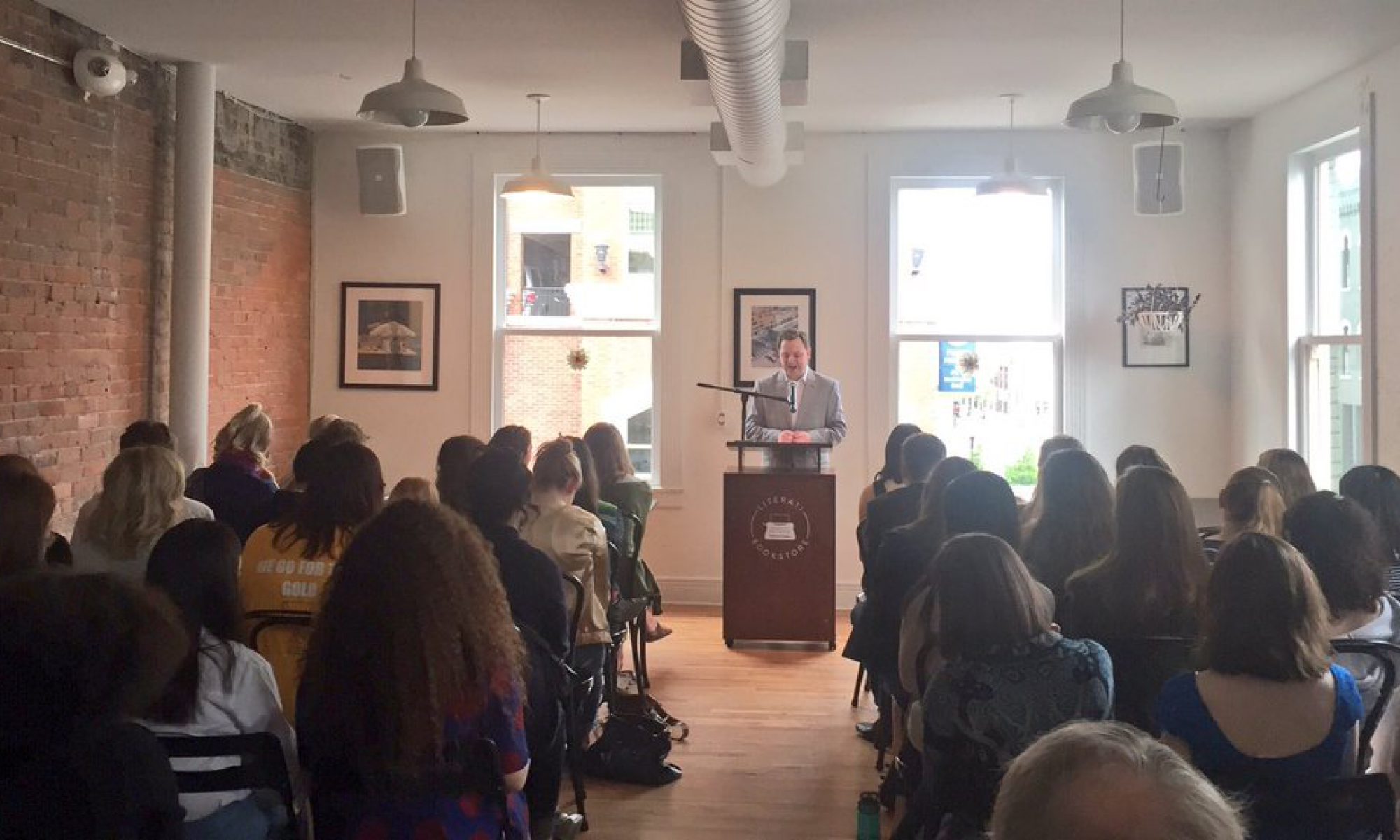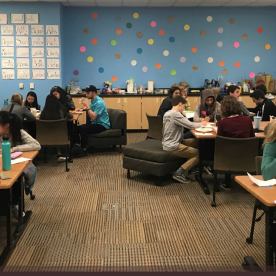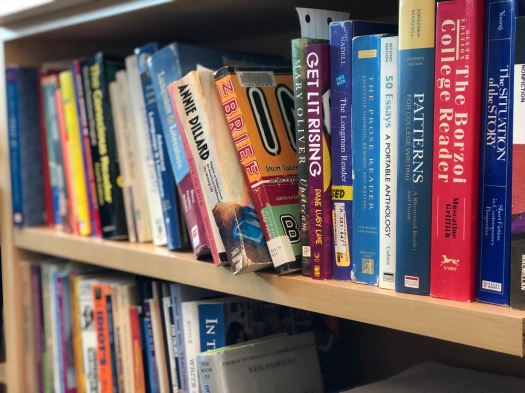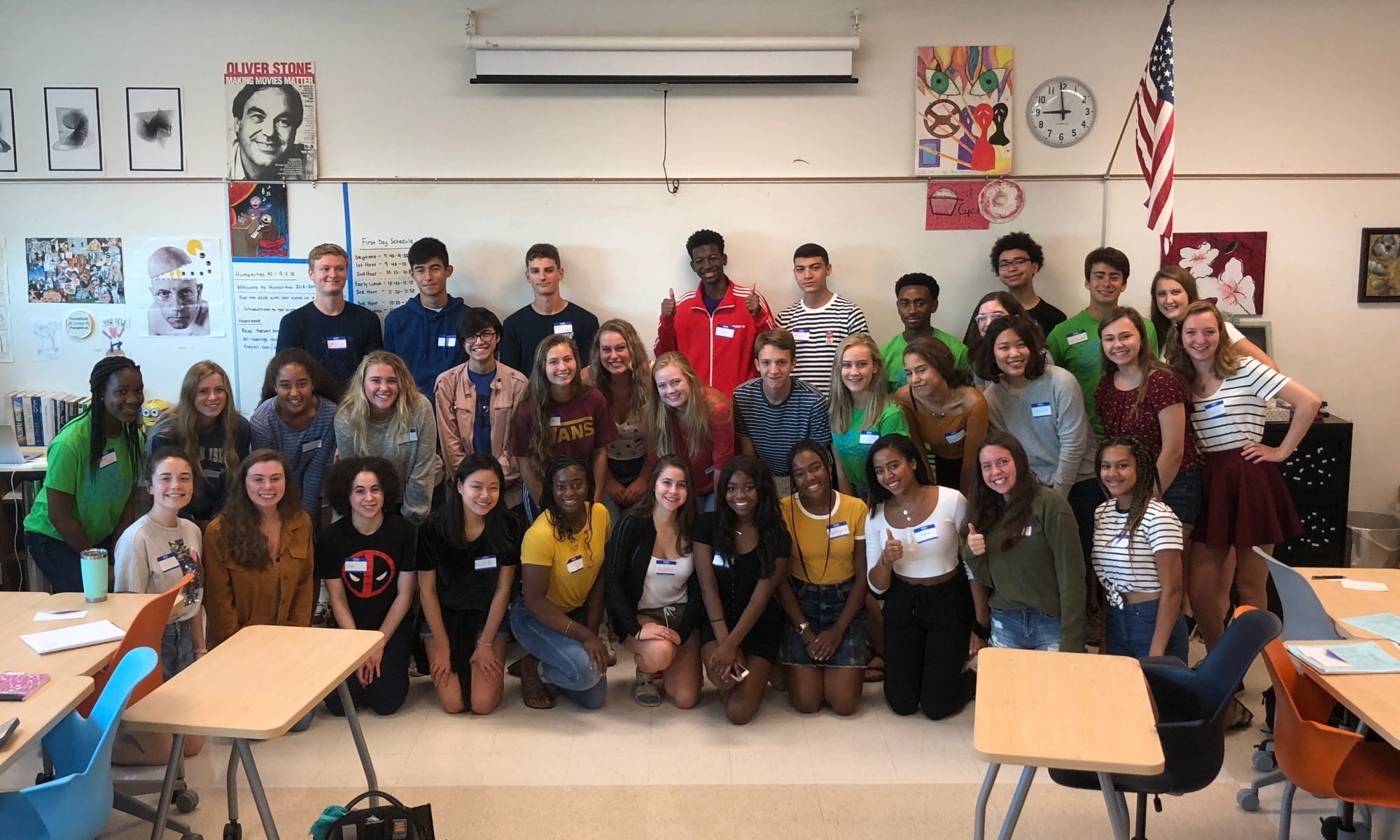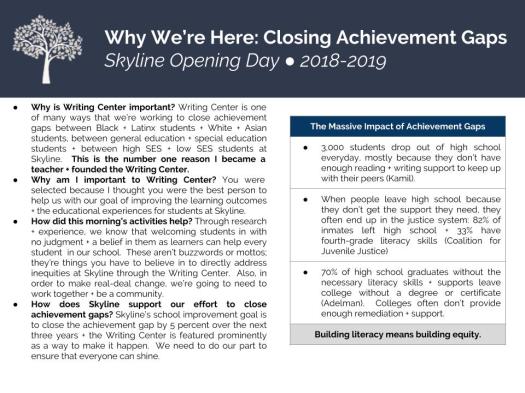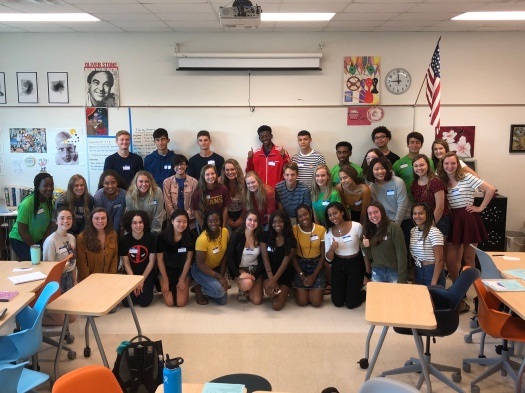If you look in the student-blaming outposts on Twitter, you’ll find literally millions of “kids these days” posts about how entitled, lazy kids are responsible for an epidemic of plagiarism without a moment of reflection or introspection from the tweeter themselves (I won’t link them here, but you can find them by searching Twitter): what was the assessment, and did students find it relevant and meaningful? Did students master the necessary skills, such as paraphrasing, prior to the assessment being given? If a student is only writing for a grade or if they feel like they lack important skills, they might turn places we don’t want them to turn. It’s hard for teachers to hear that plagiarism is rarely a student’s first resort, and, often, a symptom of a larger issue with the assessment or their pedagogy. This isn’t to say that there aren’t students who might cut corners, but defaulting to that conclusion requires a fundamental belief in some of the deficit-oriented thinking that might be causing some of the issues in the first place.
At a recent professional development session, I heard a teacher say: “Grades are the only way to get students to improve their writing.” Despite this being anathema to my own beliefs and practices, I took a moment to think through this because, on its face, there might be some truth here; students will often compliantly do what we ask for a better score, and they might learn some skills in that kind of revision process. My worry with this formulation (and others like it) is that the skill students are really learning is how to “do school;” good soldiers get rewarded. I’m also concerned that if a critical mass of a teaching staff believes that grades move writers, they probably believe that scores compel readers, too. There’s a great ILA article, written by Colette Coleman, on the way that students get pulled toward teacher interpretations of a text rather than pushed to develop their own. The article implies that teacher assessment might have something to do with this phenomenon:
When a teacher conveys that students can get to an author’s meaning only through her or his hints and leading questions, the underlying message is that students can’t navigate the text on their own.
My sense is this happens more than we like to admit, and my sense is that this makes students largely insecure about their own abilities to make interpretations and the veracity of their interpretations when they do make them. If that’s the case, can we really be shocked or surprised when a student hits SparkNotes or Shmoop to validate their thinking by finding the “right” answer? Barthes may have argued that the author was dead, but, often, the author—and their adjacent Authority—lives on through our work in the classroom, especially our assessments, which reward alignment with our ideas and agreement with the literary establishment.
Once the Author is gone, the claim to “decipher” a text becomes quite useless. To give an Author to a text is to impose upon that text a stop clause, to furnish it with a final signification, to close the writing. This conception perfectly suits criticism, which can then take as its major task the discovery of the Author (or his hypostases: society, history, the psyche, freedom) beneath the work: once the Author is discovered, the text is “explained:’ the critic has conquered; hence it is scarcely surprising not only that, historically, the reign of the Author should also have been that of the Critic, but that criticism (even “new criticism”) should be overthrown along with the Author.
Not only is this inherently inequitable, as much of the canon and its attendant literary criticism are written from dominant perspectives that lack what bell hooks terms an “oppositional gaze,” but it facilitates a fatalistic sense for students that the interesting, engaging work is done. All that’s left is the parroting and the grade, and why spend time on something that’s a fait accompli? It’s all over but the scribing.
All of this being said, I believe that what motivates students to write is relevance, choice, and opportunities to fire their imaginations, but it seems like assessments that ask students to do this kind of work are rare, at least in my educational circles. Recently, Ann Blakeslee and Cathy Fleischer from Eastern Michigan University visited to talk with students about our community-facing partnership, and students were asked to reflect about their interest and their questions about the work. Their questions and concerns largely centered around nervousness on doing the work “correctly;” they were really interested in being “right.” This was surprising, and, if I’m being honest, a little discouraging; our Family Fun Nights are all about writing along with students, actively engaging them in storytelling and sharing, and, most of all, helping kids and their families find the fun in writing (as they often find in reading). We never correct, edit, or otherwise comment on someone’s writing at one of these events, and there’s really no way to be “right.” You can be authentic or you can be inauthentic, but that doesn’t have much to do with being “right.” Problematically, however, tutors, most of whom are new, couldn’t really conceive of what this sort of event looked like and how they could promote fun and imagination in writing. Some even said after that they struggled to understand how fun and play could be a force for literacy building, and I have to think that it’s partially because that’s so far away from their current lived experience. What’s writing without grades and competition and assignments and compliance? Without these motivations, participation seems almost pointless: what are we doing this for again? One of the purposes of Family Fun Nights is to help K-8 kids keep their imaginations engaged longer and stave off writing as a purely academic exercise, but there’s some worry on my end on whether my tutors are fundamentally equipped, at least in terms of mindset, to do this work. In truth, I think our Family Fun Nights do more for my students than we do for the K-8 students. Indeed, my students need to recuperate their will to write from the grips of a compliance-based machine that has made writing about learning management systems, an interpretive guessing game whose answers are only a Google search away.
I’m excited about our Writing Center’s upcoming visit to the Sweetland Center for Writing, as we’re going to celebrate the National Day on Writing with activities for our tutors that reimagine and rekindle why we write with our college-level colleagues. My sincere hope is that students can remember what drew them to writing in the first place, which I’m willing to wager wasn’t anything that’s drawing them there now. If we can remember why we write, we have a good chance to help others do the same. There won’t be anything to Google, their won’t be any interpretation to mirror, and there won’t be any grades assigned at our event, but I would argue what’s at stake is more important—and more urgent—than any of that. I’m hoping students see it that way, too.
